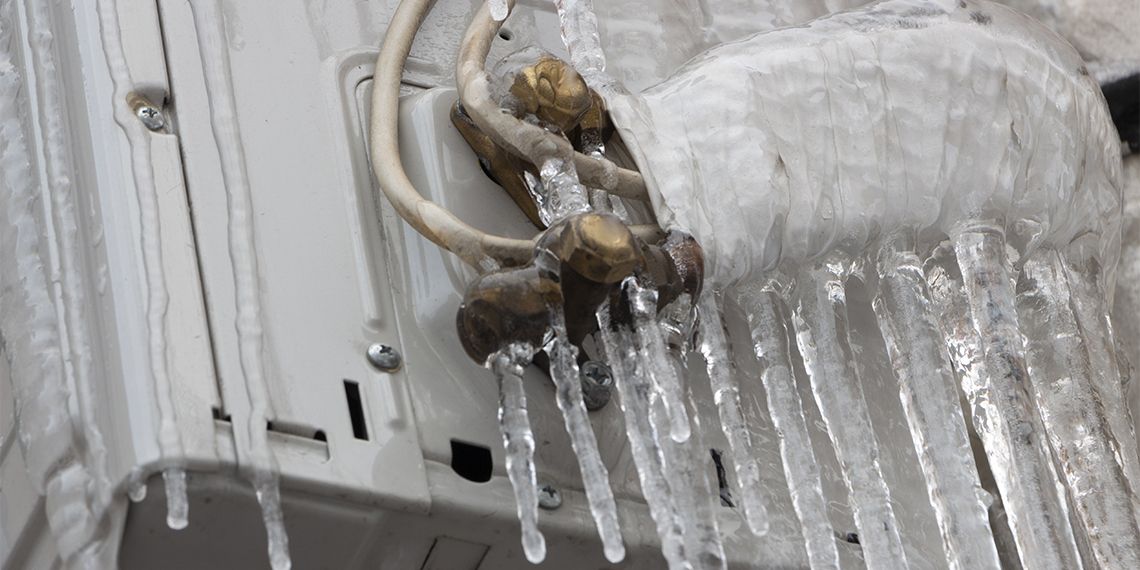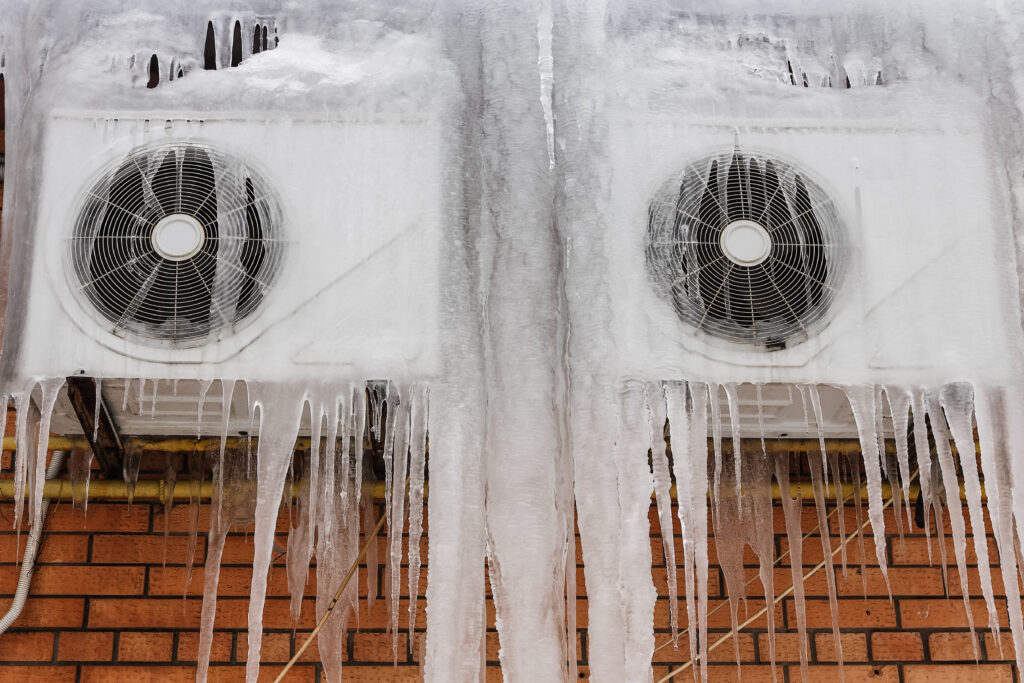Handling a Frozen AC Pipe: Proven Strategies
Handling a Frozen AC Pipe: Proven Strategies
Blog Article
How do you actually feel when it comes to Have a Frozen AC Line? Here’s How to Fix It?

Intro
Uncovering that your air conditioning pipe is iced up can be concerning, particularly throughout warm summertime when you count on your air conditioner the most. Comprehending what to do in such a circumstance is crucial to avoid further damage to your air conditioning system and ensure your convenience inside.
Recognizing the Causes
Numerous aspects can add to the cold of an a/c pipe. Understanding these reasons can help you address the problem successfully.
Lack of Airflow
One usual root cause of a frozen air conditioning pipeline is inadequate air movement. When the air movement over the evaporator coil is restricted, it can cause the coil to drop below freezing temperature level, resulting in ice development on the pipe.
Low Refrigerant Levels
Not enough refrigerant degrees in your air conditioning system can likewise cause a frozen pipeline. Reduced refrigerant levels can trigger the stress in the system to drop, resulting in the freezing of wetness on the evaporator coil.
Winter Conditions
In cooler climates, freezing temperature levels outside can add to the cold of AC pipes. If your air conditioner system is not correctly shielded or if there are leaks in the ductwork, chilly air can penetrate the system, creating the pipe to freeze.
Dirty Air Filters
Dirty or blocked air filters can restrict air flow in your air conditioning system, bring about numerous issues, including a frozen pipeline. It's necessary to change or cleanse your air filters routinely to make sure proper air flow and stop ice buildup.
Indications of a Frozen A/c Pipe
Acknowledging the indicators of an icy a/c pipe is crucial for punctual action.
Minimized Airflow
If you see a considerable decrease in air flow from your vents, it can indicate a frozen pipe.
Ice Buildup on the Pipe
Noticeable ice buildup on the refrigerant line or the evaporator coil is a clear indicator of an icy air conditioner pipeline.
Weird Sounds from the Unit
Uncommon audios, such as hissing or gurgling, originating from your a/c unit can signify that there's ice present on the pipe.
Immediate Actions to Take
When confronted with an icy air conditioning pipe, it's vital to act promptly to stop more damages to your air conditioning system.
Turning off the a/c
The first step is to switch off your air conditioning unit to prevent the system from running and exacerbating the problem.
Looking for Blockages
Inspect the area around the interior device for any kind of obstructions that may be blocking air flow, such as furniture or curtains.
Thawing the Pipe
You can use mild approaches like positioning towels soaked in cozy water around the frozen pipeline to assist thaw it slowly.
Safety nets
Taking preventive measures can help avoid future events of an icy air conditioner pipeline.
When DIY Methods Fail
If your attempts to thaw the pipeline or address various other concerns are unsuccessful, it's time to contact a specialist.
Significance of Hiring a Professional HVAC Technician
A certified HVAC service technician has the proficiency and tools necessary to diagnose and fix problems with your a/c system safely and successfully.
Routine Maintenance Checks
Schedule regular upkeep checks with a specialist HVAC professional to ensure that your air conditioner system is running effectively.
Altering Air Filters
Routinely change or cleanse your air filters to avoid airflow limitations and maintain optimum efficiency.
Insulating Exposed Pipes
If your air conditioner pipes are revealed to cold temperatures, take into consideration protecting them to stop freezing during cold weather.
Seeking Professional Help
If DIY methods stop working to solve the issue or if you're unsure regarding exactly how to proceed, it's ideal to seek help from a certified HVAC service technician.
Conclusion
Taking care of an icy air conditioner pipe can be an irritating experience, but knowing exactly how to react can assist reduce damages and bring back comfort to your home. By comprehending the reasons, recognizing the signs, and taking prompt action, you can properly deal with the problem and stop future incidents.
What to Do If Your AC Line Is Frozen
Make Sure All Supply and Return Air Vents Are Open
If you notice problems with airflow, the first thing you should do is check your supply and return vents. Supply vents distribute clean, conditioned air throughout your home. As this air becomes stale, it’s pulled into the return vent, where it’s reconditioned before being sent back out through the supply vent.
When these vents are closed, air won’t flow in the home. Before examining your AC, check the vents in every room and ensure they’re all open.
Check for a Dirty Air Filter
Another possible cause of limited airflow is a dirty air filter. Your air conditioner’s filters catch elements you don’t want to breathe in, such as dirt and dust. Over time, filters can become clogged, ultimately blocking air from flowing in and out. The lack of airflow can then cause the entire coil to freeze and will completely restrict any air from moving through it. The AC may need to be powered off for one to two days to allow the coil to thaw after replacing the filter to allow proper functioning of the unit. This debris can also accumulate on your AC’s evaporator coil, requiring a more serious repair. In general, air filters should be cleaned regularly (about every two weeks).
Assess Your Outdoor Unit
In addition to checking your AC, assessing the outdoor unit is a good idea. Also known as the condensing unit, it works with your interior unit to release heat outside. An issue with the outdoor unit can result in rising internal temperatures.
Overgrown Shrubs or Clogged Leaves
From leaves and twigs to shrubs and debris, there’s no shortage of outdoor elements that can accumulate around your condensing unit. When these elements get lodged inside the unit, they can block airflow. Fortunately, removing the blockage can solve the problem.
Sounds of a Broken Fan
Shrubs and leaves aren’t the only things that can impede your outdoor unit’s airflow. If the fan is broken, the unit won’t be able to properly get rid of heat — which means the internal temperature won’t go down. First, make sure the fan is spinning. If it is, check for the following sounds of a broken fan:
Buzzing Rattling Screeching Hissing Clicking Preventative Measures
Nobody wants to deal with a frozen AC line. In addition to causing problems with your air conditioner, they require professional repairs. On the bright side, there are preventative measures you can take to help ensure this issue doesn’t arise in the first place.
https://www.coopergreenteam.com/blog/what-to-do-if-ac-line-frozen

Do you like more info about Have a Frozen AC Line? Here’s How to Fix It? Put feedback down the page. We'd be pleased to find out your thinking about this article. We are looking forward that you visit us again before long. Don't hesitate to take the time to share this blog if you enjoyed it. Thanks so much for taking the time to read it.
Details Report this page